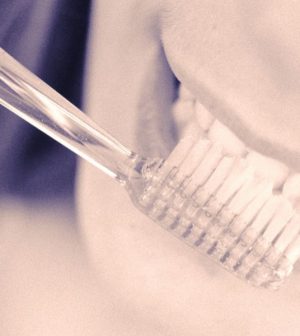- Navigating Your Midlife Crisis: Embracing New Possibilities
- City Raccoons Showing Signs of Domestication
- Mapping the Exposome: Science Broadens Focus to Environmental Disease Triggers
- One Week Less on Social Media Linked to Better Mental Health
- Your Brain Changes in Stages as You Age, Study Finds
- Some Suicide Victims Show No Typical Warning Signs, Study Finds
- ByHeart Formula Faces Lawsuits After Babies Sickened With Botulism
- Switch to Vegan Diet Could Cut Your Greenhouse Gas Emissions in Half
- Regular Bedtime Does Wonders for Blood Pressure
- Dining Alone Could Mean Worse Nutrition for Seniors
New Coronavirus Can Also Infect Cells in the Mouth

Add another part of your body to the list of what COVID-19 can invade: New research shows mouth cells can be infected with the new coronavirus.
Previous studies have shown that the coronavirus infects the upper airways and lungs, the digestive system, blood vessels and kidneys, which may explain the wide-ranging symptoms experienced by COVID-19 patients.
Those symptoms include loss of taste, dry mouth and blistering. Along with explaining those symptoms, the new findings suggest the mouth plays a role in transmitting the coronavirus to the lungs or digestive system through saliva that contains coronavirus from infected cells in the mouth, the researchers reported.
“When infected saliva is swallowed or tiny particles of it are inhaled, we think it can potentially transmit SARS-CoV-2 further into our throats, our lungs, or even our guts,” study co-leader Kevin Byrd said in a U.S. National Institute of Dental and Craniofacial Research (NIDCR) news release.
Byrd is a research scholar at the American Dental Association Science and Research Institute. He was an assistant professor in the School of Dentistry at the University of North Carolina at Chapel Hill at the time of the study.
Learning more about coronavirus infection in the mouth could lead to new ways to reduce transmission of the virus within and outside the body, according to the study published online March 25 in the journal Nature Medicine.
It was already known that the saliva of COVID-19 patients can contain high levels of the new coronavirus (SARS-CoV-2), and saliva testing is believed to be nearly as reliable as deep nasal swabbing for diagnosing COVID-19.
But until this study, it wasn’t clear where SARS-CoV-2 in the saliva comes from. For the study, researchers analyzed oral tissue from COVID-19 patients who had died, as well as a few dozen volunteers with mild or asymptomatic COVID-19.
This was a small study, so further research in a larger group of patients is needed to confirm the findings and pinpoint exactly how the mouth is involved in SARS-CoV-2 infection and transmission within and outside the body, the study authors said.
Study co-leader Blake Warner is assistant clinical investigator and chief of the salivary disorders unit at the NIDCR. He said, “By revealing a potentially under-appreciated role for the oral cavity in SARS-CoV-2 infection, our study could open up new investigative avenues leading to a better understanding of the course of infection and disease. Such information could also inform interventions to combat the virus and alleviate oral symptoms of COVID-19.”
More information
The U.S. Centers for Disease Control and Prevention has more on COVID-19.
SOURCE: U.S. National Institute of Dental and Craniofacial Research, news release, March 25, 2021
Source: HealthDay
Copyright © 2025 HealthDay. All rights reserved.










